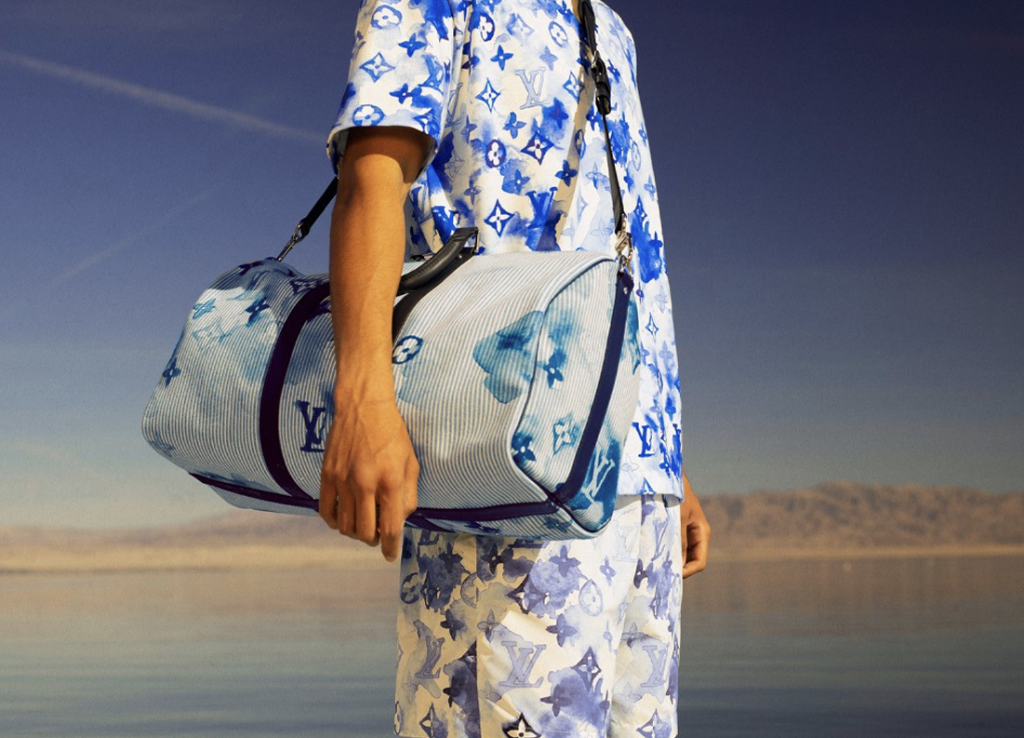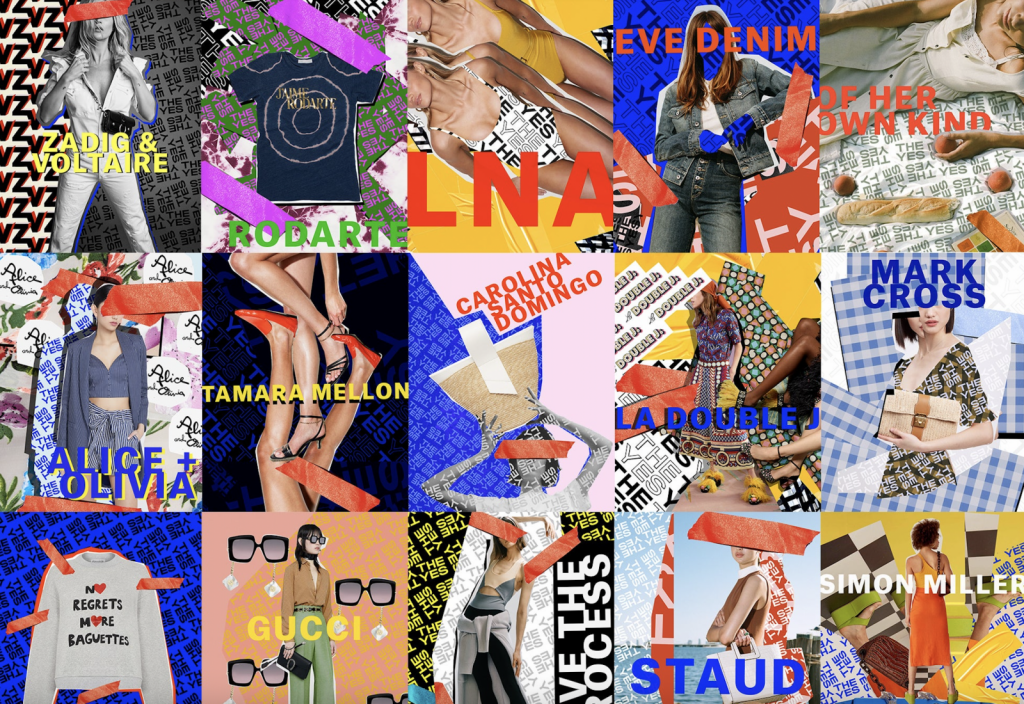In May 2019, LVMH Moët Hennessy Louis Vuitton made headlines when it announced that it was working on something big in the blockchain space. By way of a partnership with blockchain company ConsenSys and Microsoft, the Bernard Arnault-run luxury goods conglomerate teased the launch of Aura, a platform that it said would “serve the entire luxury industry with powerful product tracking and tracing services, based on Ethereum blockchain technology and utilizing Microsoft’s [cloud computing service] Azure.” At the time, LVMH was relatively tight-lipped about what – exactly – the project would entail and what the timeline behind it looked like.
While few hints were offered about the status of the project in the wake of the initial announcement, it turns out that it has very much been in the works behind the scenes. In the two years since LVMH’s revelation, the Paris-based group’s marquee brand Louis Vuitton has been quietly working to link a “very significant” number of new products to blockchain-hosted digital certificates of authenticity that exist alongside those physical goods and give consumers insight into the providence of the products. At the same time, in a nod to LVMH’s vow that it would make the system available to other industry entities (for a licensing fee), including those that do not fall under its sweeping ownership umbrella, Lorenzo Bertelli, head of marketing and corporate social responsibility at Prada Group, told WWD this week that Prada is using LVMH’s technology, and has “been readying for the Aura blockchain by embedding radio-frequency identification – or RFID – chips into ‘millions’ of products, which began reaching stores in the second half of 2020.”
“To thwart counterfeiting, suppliers and manufacturers can join a single blockchain platform and use ‘smart tags’ (i.e., unique cryptographic identifiers) to track and confirm the provenance and location of each item,” BCG explained in a 2019 report exploring the applications of blockchain and the Internet of Things (“IoT”) in the context of the counterfeit market. The tags, which can “capture the complete genealogy of a product and are hard to replicate,” the consultancy asserts, come in “a variety of forms, including security labels with unique QR codes, RFID, and digital tags that contain an individualized software component.” It notes that “counterfeit tags will not show up on the blockchain, for instance, and if a smart tag is somehow duplicated, a quick scan of the blockchain will indicate when and where the genuine item was manufactured and sold, thus revealing the duplicate item as a fake.”
Not to be outdone, Swiss conglomerate Compagnie Financière Richemont – which owns Cartier, Vacheron Constantin, Piaget, and Van Cleefs and Arpels, among other hard luxury brands – has also signed onto what is being called the Aura Blockchain Consortium in furtherance of its existing quest to equip its products, namely, its high-end timepieces, with digital certificates of authenticity. (Richemont maintains a partnership with Arianee, an Ethereum-based project, that aims to aid in a more seamless resale market by way of its “NFT digital passports for luxury goods,” which go so far as to digitize service history and repairs).
As for how the Aura system works, LVMH previously stated that newly-made products will be “recorded on the shared [blockchain] ledger, irreproducible and containing unique [product] information.” At the time of purchase, consumers will be given access to the individual Aura certificate – or certificates – for the goods they buy, and thereby, granted access to all information associated with those goods. At initial sale, this information, including “responsible sourcing and sustainability” stats, may be compelling in that it will allow consumers to see where the products were made. (It is easy to be at least a bit skeptical about how precise brands will be in this regard given the appeal of designations like “Made in France” and “Made in Italy” and given the fact that various national labeling laws enable brands to legally go without mentioning when products are manufactured in part in traditionally less “luxurious” locales outside of the final finishing factories on their home turf, as is often the case).
The use of an industry-wide blockchain that securely holds information about luxury goods would “increase customer trust in the brands’ sustainable practices and product sourcing,” LVMH, Richemont, and Prada claimed in a joint statement on Tuesday.
More compelling, of course, will be how these blockchain-based records will apply in a post-initial-sale capacity. The immutable information written into individual products’ ledgers will, at least in theory, not only verify authenticity of a product, but will securely track changes in ownership, and thus, the technology could make it possible for consumers to access the product history and corresponding proof of authenticity of luxury goods downstream and over time. In the counterfeit-filled resale market, where issues of authenticity are pressing (partially as a result of many brands’ unwillingness to partner with resale companies and verify authenticity), the ability to trace the provenance of a product could prove a significant advantage for resale companies and consumers, alike, especially as the value of the luxury resale market continues to climb seemingly unabated.
At the same time, brands may be able to take advantage of such traceability and ensure that products are, in fact, legitimate after the initial point of sale. This will be increasingly relevant as a growing number of circularity-minded brands offer up repair services to their customers (something that Hermès, for instance, has been doing for a while) and/or launch buy-back and resell programs of their own in order to exert more control over the booming resale market and to capitalize on their pre-owned goods, as opposed to losing out in this revenue stream to third parties.
And even more fundamentally, BCG says that “manufacturers and suppliers can use the blockchain platform to authenticate items, flag deviations from agreed-upon sourcing arrangements, and prevent defective and inferior components from entering the production system.” With that in mind, digitizing and storing the identification and authenticity information associated with a luxury product, as opposed to relying exclusively on physical authenticity cards or records, would prove compelling for brands given that largescale theft of “it” accessories and/or authenticity cards, alone, is not unheard of. Chanel, for instance, revealed in connection with a currently ongoing lawsuit that one of its authorized factories was robbed in 2012, and the thieves got away with authenticity cards, which were then paired with counterfeit bags and sold.
While the scale of the benefits of such provenance-tracing ventures “varies across businesses” and industries, BCG found that generally speaking, “blockchain with IoT could be a source of significant financial and competitive advantage for many.” This is likely to be especially true for luxury goods brands, which routinely invest significant time and resources “tracking [product] parts, validating provenance, communicating with partners, and filling out copious documentation to ensure the authenticity of their products and to protect customers” and their valuable brand images, all while operating against the background of a counterfeit industry that is worth an estimated $4.5 trillion per year, some 60 to 70 percent of which is tied directly to sales of fake luxury goods.
As for what the collaboration means in the highly competitive upper echelon of the luxury sphere, LVMH Managing Director Antonio Belloni said that fight against counterfeiting is one area where it makes sense for brands to work together and share resources as opposed to developing individual technologies. He confirmed that Aura has had discussions with Gucci-owner Kering, but did not elaborate. As for LVMH, he said that Louis Vuitton, Bulgari and Hublot have made use of the Aura the technology, and the newly-acquired Tiffany & Co. is the next “obvious” brand to give it a go.











